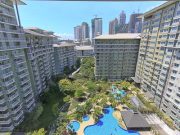
Are you looking to sell a property in the Philippines? We will teach you how to sell a property in the Philippines. We will cover everything from setting the right price to finding potential buyers. So whether you are a first-time seller or a seasoned pro, this blog post has something for you.
Remember, the goal is to sell your real property so that you can move on to the next chapter in your life. With a little effort, you should be able to find a buyer and successfully sell your property.
Now let’s get started.
1. Get a clear understanding of the Philippine real estate market.
The first step to selling your real property in the Philippines is to get a clear understanding of the local real estate market. Doing your research will help you set a realistic asking price for your home and make the selling process go much smoother. If you’re not sure where to start, you can check out online real estate listings like HousingInteractive or speak to a local real estate agent.
Another important aspect of the real estate market to be aware of is the process of buying and selling real estate ownership in the Philippines. Let’s say you are to sell your condo unit at McKinley Hill, Taguig, or Makati City, it’s normal for sellers to ask for a deposit (usually around 20% of the purchase price) when buyers are making an offer on a property. Once the offer is accepted, the buyer and seller will sign a contract that outlines the terms and conditions of the sale.
| Real property Refers to an interest that a person or entity has in real estate. The term is used in common law to indicate one’s right, interest, and benefit relating to the ownership of real estate. Real estate Refers to the land and all those physical items attached to it, together with all its additions or improvements. What does this mean for you? It means that you have the right to sell, lease, and enjoy the real property once ownership of the real estate is established. |
2. Find the right broker or agent for your property.
When selling your property, for instance in San Juan, you need to find the right real estate broker or agent who will be able to help you through the process of selling your properties.
A good way to find a real estate broker or agent is to ask for referrals from friends or family who have recently sold a property. You can also search online or look at the yellow pages. They will be able to answer any questions you may have about selling properties and help you come up with a fair and reasonable price for your property based on recent sales in the area. Once you have a price in mind, it’s time to start preparing your property for sale by staging it.
3. Prepare your property for sale by cleaning and staging it.
You want potential buyers to be able to see themselves living in your home, so it’s important to make it look as inviting as possible. Start by decluttering and cleaning every room, including the kitchen and bathrooms. Remove items and personal effects such as photo frames. You may also want to consider hiring a professional stager to help you make your residential property look its best.
4. Getting the right permits
When you’re ready to sell your property in the Philippines, the process is quite simple. To sell your property, the next step is to obtain the necessary permits from the local government from where the property is located. For instance, if you’re selling your house located in Mandaluyong City, you must file the necessary paperwork and secure the right permits in the Mandaluyong City government office.
Make sure you have all the required documents before moving forward with the sale. The first step is to get a Certificate of Title from the municipal/city Registry of Deeds and a Tax Clearance Certificate from the municipal/city Treasury Office. These documents prove that you own the property and that there are no outstanding debts, liens, or encumbrances against the property that you are selling.
Finally, you’ll need to get a Capital Gains Tax (CGT) Certificate from the BIR Revenue District Office (RDO) from where the property is located. This certificate proves that you’ve paid all of your capital gains taxes on the sale of the property.
| What are encumbrances? An encumbrance can be an assertion of your property by someone who is not even the owner. The three most common types of encumbrances that apply to real estate are mortgages, easements, and property tax liens. What does this mean for you? This will impact how freely you can use the property until this person’s claim goes away. Like mortgages or other loans, encumbrances may restrict your ability to use the property as collateral. |
5. Set your asking price accordingly and negotiate.
As a seller, you want to make sure that you price your property correctly. The first thing you need to do is find out the fair market value of your property. There are a few ways to do this: If you are to sell a residential property in Quezon City, look at comparable properties that have recently been sold in your area and compare them to your own property. Hire a professional appraiser to assess the value of your property and provide an appraisal report.
If you’re still not sure what to price your property at, it’s always a good idea to work with your real estate agent to come up with a fair and reasonable price for your property. They will have a good understanding of the current market conditions and can help you price your property accordingly.
Once you have understood your real estate’s fair market value (FMV), you can lay out your asking price and negotiate with your buyer. You don’t want to overprice or underprice your home, as this can either turn away potential buyers or result in you losing money on the sale.
| What is a real estate appraiser? An appraiser is someone who has been licensed by law to give opinions as an expert on real estate values and provide an appraisal report. What is an appraisal report or appraisal? An appraisal report or appraisal is a detailed document that outlines the property’s value based on its quality, condition, and location. |
6. Market your property through online listings, social media, and word-of-mouth.
Once you have all the necessary paperwork in order, it’s time to start advertising your property. Your real estate agent will probably list your property on their website and other listing sites like HousingInteractive. They may also hold open houses or put up signs in front of your property.
The objective is to get as much exposure for your property as possible so that you can find a buyer quickly. You can also market your property through social media and word-of-mouth. Tell your friends and family that you’re selling your home or property and ask them to share the news with their networks.
7. Handle offers and negotiations with potential buyers.
Once you’ve found a potential buyer for your property, it’s time to start negotiating. Your real estate broker or agent will likely handle most of the negotiations on your behalf. However, you’ll need to be involved in the process of negotiating the contract and be willing to compromise in order to finalize the sale.
The point is to come to an agreement that is acceptable to both parties. Keep in mind that the objective is to sell your property, with a little effort, you should be able to find a buyer and successfully sell your home.
| What is a contract? A contract is a legally binding agreement between two or more parties. In the Philippines, contracts are often used in real estate transactions to formalize an offer to buy or sell a property. It outlines the terms of the agreement, including the purchase price, down payment, and closing date. After both parties have signed the contract, the buyer will then put down a deposit (usually around 20% of the purchase price). |
8. Finalize the sale and transfer ownership of the real estate to the buyer.
The final step in selling real property in the Philippines is to transfer ownership of the real estate to the buyer. If a proprietor is to sell a house or a piece of land, it is typically done by executing a deed.
A deed is a legal document that transfers ownership of real estate from the seller to the buyer. It should be signed accordingly by both parties, notarized, and filed with the proper local government offices. Once the deed is filed, the buyer will officially become the owner of the real property.
| What is the difference between an Absolute Deed and a Conditional Deed of Sale? A Deed of Absolute Sale is a document that states full payment has been made and the right of ownership is transferred immediately. It typically includes a warranty that the property is free from any legal claims or encumbrances. A Deed of Conditional Sale is a document that states payment will be made in part and transfer of full ownership is subject to the fulfillment of conditions agreed on. |
Selling your real property in the Philippines is a process, but it doesn’t have to be difficult. With HousingInteractive, we make it easy for you to find a buyer and get the best price for your property.
Contact us today to learn more!

























